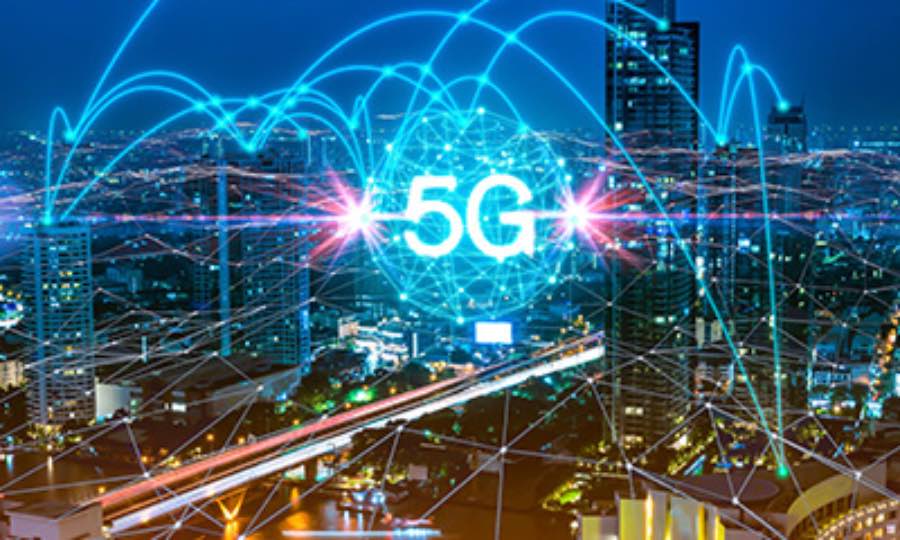
In Futures Parity, Mobile Tornado’s managing director, Luke Wilkinson, considers the significance of the roll out of 5G in the critical communication sector. 5G has been gradually rolled out since 2019 with more and more countries and regions around the world adopting this cutting-edge technology.
In critical sectors where high-stakes situations are common, effective communication is non-negotiable. Whether it’s first responders dealing with a crisis or a construction team coordinating a complex project, the ability to share information quickly and reliably can mean the difference between success and failure.
Long-distance communication became feasible in the 1950s when wireless network connectivity was first utilised in mobile radio-telephone systems, often using push-to-talk (PTT) technology. As private companies invested in cellular infrastructure, the networks developed and data speeds improved increasingly. Each major leap forward in mobile network capabilities was classed as a different generation and thus 1G, 2G, 3G, 4G, and now 5G were born.
5G is the fifth generation of wireless technology and has been gradually rolled out since 2019 when the first commercial 5G network was launched. Since then, the deployment of 5G infrastructure has been steadily increasing, with more and more countries and regions around the world adopting this cutting-edge technology.
Its rollout has been particularly significant for critical sectors that rely heavily on push-to-talk over cellular (PTToC) solutions. With 5G, PTToC communications can be carried out with higher bandwidth and speed, resulting in clearer and more seamless conversations, helping to mitigate risks in difficult scenarios within critical sectors.
How is 5G benefiting businesses?
According to Statista, by 2030, half of all connections worldwide are predicted to use 5G technology, increasing from one-tenth in 2022. This showcases the rapid pace at which 5G is becoming the standard in global communication infrastructure.
But what does this mean for businesses? Two of the key improvements are improved bandwidth and download speeds, facilitating faster and more reliable communication within teams. PTToC solutions can harness the capabilities of 5G and bring the benefits to critical sectors that need it most, whether that’s in public safety, security, or logistics: the use cases are infinite. For example, this could be leveraging 5G’s increased bandwidth to enable larger group calls and screen sharing for effective communication.
Communication between workers in critical industries can be difficult, as often the workforces are made up of lone workers or small groups of individuals in remote locations. PTToC is indispensable in these scenarios for producing quick and secure communication, as well as additional features including real-time location information and the ability to send SOS alerts. PTToC with 5G works effectively in critical sectors, as 5G is designed to be compatible with various network conditions, including 2G and 3G. This ensures that communication remains reliable and efficient even in countries or areas where 5G infrastructure is not fully deployed to keep remote, lone workers safe and secure.
The impact of 5G on critical communications
The International Telecommunication Union has reported that 95 percent of the world’s population can access a mobile broadband network. This opens up a world of new possibilities for PTToC, particularly when harnessing new capabilities for 5G as it’s being rolled out.
One of the most significant improvements brought by 5G is within video communications, which most PTToC solutions now offer. Faster speeds, higher bandwidth, and lower latency enhance the stability and quality of video calls, which are crucial in critical sectors. After all, in industries like public safety, construction, and logistics, the importance of visual information for effective decision-making and situational awareness cannot be overstated. It enables the real-time transmission of high-quality video, allowing for effective coordination and response strategies, ultimately improving operational outcomes and safety measures.
Challenges in Adopting 5G in Critical Sectors
While the benefits of 5G are undeniable, the industry faces some challenges in its widespread adoption. Network coverage and interoperability are two key concerns that need to be addressed to ensure communication can keep improving in critical sectors.
According to the International Telecommunication Union, older-generation networks are being phased out in many countries to allow for collaborative 5G standards development across industries. Yet, particularly in lower-income countries in Sub-Saharan Africa, Latin America, and Asia-Pacific, there is a need for infrastructure upgrades and investment to support 5G connectivity. The potential barriers to adoption, including device accessibility, the expense of deploying the new networks, and regulatory issues, must be carefully navigated to help countries make the most out of 5G capabilities within critical sectors and beyond.
However, the rollout of 5G does cause data security concerns for mission-critical communications and operations, as mobile networks present an expanded attack surface. Nonetheless, IT professionals, including PTToC developers, have the means to safeguard remote and lone workers and shield corporate and employee data. Encryption, authentication, remote access, and offline functionality are vital attributes that tackle emerging data threats both on devices and during transmission. Deploying this multi-tiered strategy alongside regular updates substantially diminishes the vulnerabilities associated with exploiting 5G mobile networks and devices within critical sectors.
While the challenges faced by the industry must be addressed, the potential benefits of 5G in enhancing communication and collaboration are undeniable. As the rollout of continues to gain momentum, the benefits of this cutting-edge technology in enhancing communication in critical sectors are becoming increasingly evident. The faster, more reliable, and efficient communication enabled by 5G is crucial for industries that rely on real-time information exchange and decision-making.
Looking ahead, the potential for further advancements and increased adoption of 5G in critical sectors is truly exciting. As the industry continues to address the challenges faced, such as network coverage, interoperability, and data security concerns, we can expect to see even greater integration of this technology across a wide range of mission-critical applications for critical sectors.